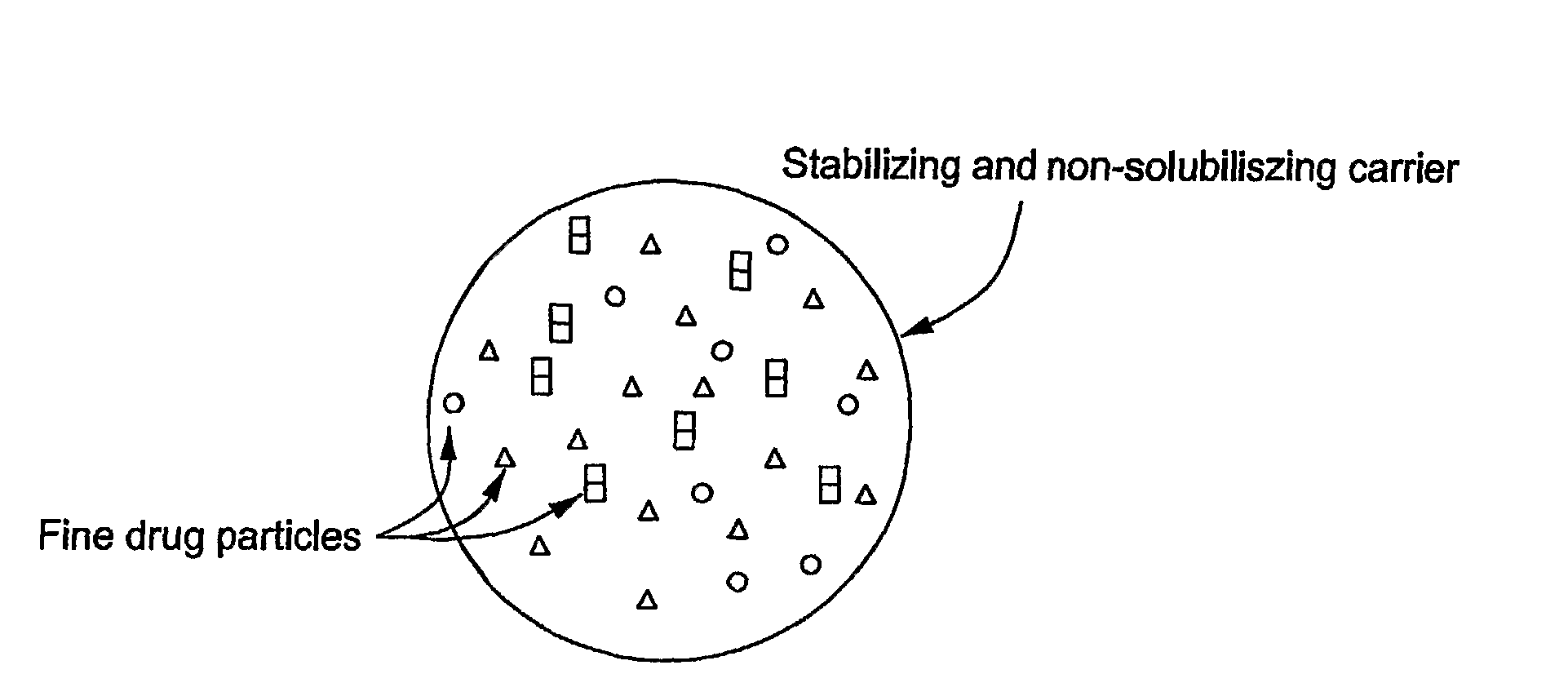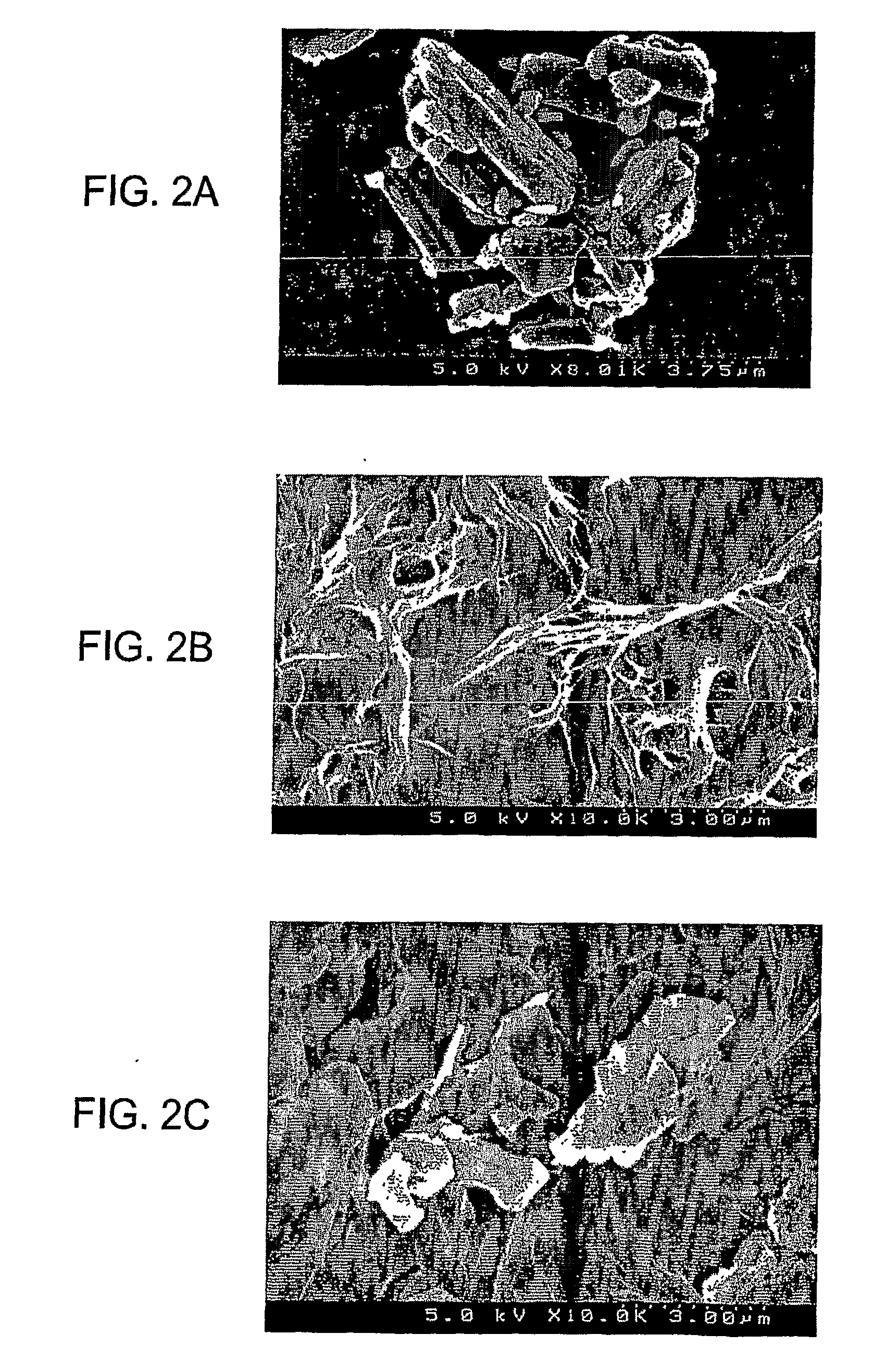Stabilized Hme Composition With Small Drug Particles
a technology of hme and drug particles, which is applied in the direction of drug compositions, heterocyclic compound active ingredients, capsule delivery, etc., can solve the problems of preventing the successful commercialization of pharmaceutical products, affecting the stability of such preparations on storage, and affecting the stability of such preparations
- Summary
- Abstract
- Description
- Claims
- Application Information
AI Technical Summary
Benefits of technology
Problems solved by technology
Method used
Image
Examples
example 1
[0190]The following process was used to prepare a hot-melt extruded composition according to the invention. The following ingredients in the amounts indicated were used in preparing hot-melt extruded control and sample compositions containing itraconazole (ITZ) as the active agent. The amounts are indicates in parts by weight.
PoloxamerNo.ITZPEOHPMCPVASLS407101000002190000309100041810005090100618010070900108180010909000110180001
[0191]A Randcastle Microtruder RCP-0750 hot-melt extruder equipped with a 6 mm round die was operated at 15 RPM, 0.2-0.3 Drive Amps with an Extrusion Temperature of 100° C. to prepare the composition. All powders were blended in a v-shell blender prior to extrusion. Temperature zones were set as follows: zone 1: 90° C., zone 2: 95° C., zone 3: 100° C., die temperature 100° C. The powder blend was placed in a hopper that is located at the head of a vertical screw such that the material is flood fed by gravity. The residence time of the material in the extruder ...
example 2
[0193]The fine drug-containing particles and compositions containing them were analyzed by scanning electron microscopy using a Hitachi S-4500 scanning electron microscope. Samples were coated with Au / Pd and an accelerating voltage of 5 kV was used.
example 3
[0194]Changes in the degree of crystallization of the fine drug-containing particles, either neat or dispersed within a hot-melt extruded composition, were determined and quantified by differential scanning calorimetry. A TA Instruments Model 2920 calorimeter was used to conduct the analyses. The calorimeter was operated using the following parameters:
[0195]Nitrogen Purge Flow Rate: 150 ml / min
[0196]Sample Pan: Aluminum (Closed)
[0197]Sample Weight: 10-15 mg
[0198]Heating Rate: 10° C. / min
[0199]Range: 20-200° C.
[0200]The thermograms obtained from the DSC were analyzed using the TA Universal Analysis Software in which peak minimums are determined by linear baseline method with manually selected limits.
PUM
| Property | Measurement | Unit |
|---|---|---|
| Temperature | aaaaa | aaaaa |
| Particle diameter | aaaaa | aaaaa |
| Fraction | aaaaa | aaaaa |
Abstract
Description
Claims
Application Information
 Login to View More
Login to View More - R&D
- Intellectual Property
- Life Sciences
- Materials
- Tech Scout
- Unparalleled Data Quality
- Higher Quality Content
- 60% Fewer Hallucinations
Browse by: Latest US Patents, China's latest patents, Technical Efficacy Thesaurus, Application Domain, Technology Topic, Popular Technical Reports.
© 2025 PatSnap. All rights reserved.Legal|Privacy policy|Modern Slavery Act Transparency Statement|Sitemap|About US| Contact US: help@patsnap.com



